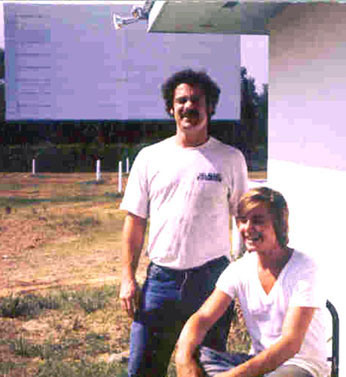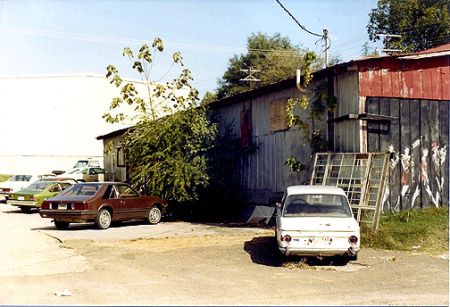Headlines
The Hoka
Jesse Yancy is one of the colorful artists that live in the shadow of the literary culture established in Oxford by William Faulkner. Jesse is a writer with a great sense of history and one who enjoys life to the fullest. He is from Bruce, MS, and from parents who were major players in the Mississippi political scene. Among Jesse’s mentors were “Mayor” Ron Shapiro of Hoka fame and Faulkner/Ole Miss photographer Jack Cofield.
I began working at the Hoka in the summer of 1977.
The theatre opened in 1974. The Hoka was a long corrugated building with a walkway that extended perhaps 2/3 its length to street level in the north. A single door was at that end; midway was a short roofed porch with a paned double doorway. To the left of those doors was the Hoka logo, a winged Chickasaw princess.
The auditorium seated perhaps 150-200 people (usually much less). The projection booth was up a short flight of stairs from a tiny, spectacularly untidy office. The concession stand sold candy, popcorn and soft drinks. A bare concrete floor sloped up to the ticket stand, which was nothing more than a rough-hewn pulpit with a top shelf that held a cash box and a roll of tickets.
The projectors were twin 1936 carbon arc machines, which took a lot of practice with levers and foot pedals to run a seamless show. Typically, in the early days, we’d have two showings, an early movie that started around 6 or 7, and a later feature beginning at 8 or 9, depending on the duration of the first. Later on we started showing X-rated flicks at midnight, which caused quite a stir at the time, but were quite profitable.
Films were rented for three to four days, shipped in bulky hexagonal aluminum containers holding anywhere from one to three spools of 35mm film. Most often they were shipped by bus, and we’d pick them up at the Greyhound station on the corner of 10th and Van Buren, but at times we’d drive to Memphis. Once in the theater, the film had to be checked for tears, mended if needed, and then loaded on our projector reels. These movies were hardly ever first-run, of course. Ron showed a lot of great movies, including ones by John Waters, Russ Meyers and William Castle along with dozens of cinema classics. The Hoka reintroduced film as an art form to Oxford.
Ron was a good boss; pay could be erratic, but if I needed money, he’d give me enough to get what I needed or do what I wanted. When my friend and fellow projectionist Joe Cupstid and I took an impulsive road trip to the Smokies late one summer, he gave us both a hundred bucks and told us to have a good time. We did, and I’ll never forget that kindness.
A decade after the trauma of the Sixties, Oxford had become a laid-back, picturesque Southern academic backwater, full of good people with great ideas. The art scene was strong, and the town was full of bright, ambitious young businessmen. Oxford’s flowering of culture in the 80s was seeded in that time. Those years were halcyon days for me, as they were for many, many other people, and the Hoka was very much a part of it for us all.
— Jesse Yancy
— To read more from Jesse you can visit http://jesseyancy.com/


























Jesse Yancy
September 27, 2013 at 11:08 am
You can read more at http://www.jesseyancy.com
StarReb
November 11, 2013 at 11:24 am
Saw the “Rocky Horror Picture Show” there many years ago.
Greg Millar
June 10, 2018 at 4:28 pm
I was with a mostly white reggae band between 1983 and 1985, called ” Little Women”. We were booked, literally, across the street, at ” The Gin” for a week that included a tornado warning, during which the barker saw fit to tell us to get down below the tables, and that drinks were on the house. We also played , that tour, at “The Dock” on the lake outside Jackson. Thought you might like the (long) story. Peace. Out.
Greg Millar
June 10, 2018 at 4:33 pm
Oops. My point was that Ron immediately welcomed us, and that, I’m from Missoula, Montana, where the Hoka’s sister theater, the Crystal, still exists. It was only through coincidence, conversation, and his conviviality, that I learned of the connection.
Greg Millar
June 10, 2018 at 4:35 pm
We did play the Him a, and kinda tore it up.
Greg Millar
June 10, 2018 at 4:38 pm
Hoka. Silly google.